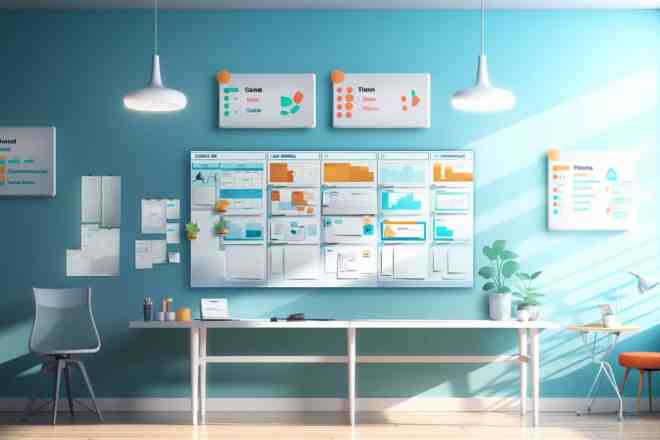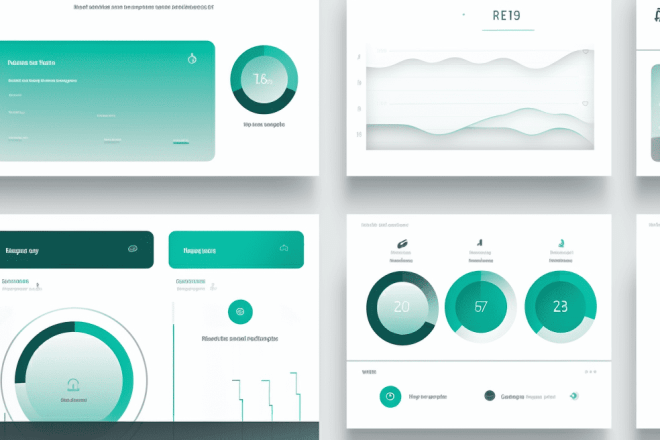Every designer needs a UX process checklist to achieve their desired outcome. It’s critical to reach user satisfaction no matter which industry. Because when you build a good experience for customers, they’ll spread the word and save businesses tons of money in marketing.
Therefore, the next time you start a project for one of your clients, keep this checklist in mind. It will help you stay focused, align your project with business goals, understand the user and avoid high-cost mistakes.
What Is a UX Design Process?
The UX design process is a structured approach designers use to create digital products that are visually appealing and user-friendly. UI (User Interface) and UX often go hand in hand. UI focuses on visual elements such as colors, buttons and layouts. In contrast, UX concentrates on the overall interaction and experience of the user with the product. While you’ll often hear the terms used interchangeably in UX design — each has its own design processes.
In the UX design process, there are four main stages involved:
- Research: This is where designers gather information to understand user needs and preferences.
- Analysis: The collected data is reviewed to identify patterns and insights.
- Design: Based on the insights, visual and interactive elements are created.
- User testing: The design is presented to real users to gather feedback, which can lead to refinements.
Many designers use the UX process to consider all aspects of the user’s interaction with a system. Adopting this process ensures designers can develop interfaces that serve and satisfy the end user.
The Importance of the UX Design Process and How it Helps Designers
The UX design process is critical to the success of any digital creation. Its importance stems from its ability to boost the overall customer experience to achieve greater satisfaction. Users interacting positively with a product are more likely to become loyal customers. This can lead to higher conversion rates, in turn.
When a designer follows the UX design process thoroughly, designers get a clear understanding of their user base. This means they can tailor their designs to their audience’s needs. In turn, you ensure the product resonates more deeply with its users, leaving it open to higher usage.
Businesses rely heavily on web applications for various purposes and functions, so a solid UX design is necessary to build them. A well-executed design makes the applications more intuitive and user-friendly, allowing businesses to achieve better results.
Using a UX design process allows designers to adhere to best practices that ensure the highest quality output. Integrating thoughtful UX design can uplift a brand’s image and make it more credible in users’ eyes. As such, designers that prioritize the UX process allows them to invest in the long-term growth and success of the brand or client they work for.
1. Define Project Goals and Scope
The UX process checklist starts by understanding the client’s vision and user needs. Determine the project’s primary objectives — Is it to increase user engagement or simplify navigation?
Next is to outline the project’s boundaries to prevent scope creep. This is so the project stays on budget and within the proposed timeline. Consider identifying potential challenges early in the project. These can be budget constraints and tight timelines. Doing so will create a focused and realistic design plan.
2. Identify Your Buyer Personas
Understanding your buyer personas is critical to your project’s success. When you represent your ideal customers, you create more valuable content for them. As a result, a personalized user experience exists.
To create your buyer personas, consider the problem or pain point that exists. Listen to your users to gain a solid understanding of who they are in real life. Once you identify the problem and create your user personas, you can build a solvable product for just those people.
3. Gather Qualitative and Quantitative Data
Once you’ve identified your target personas, you’ll need to start understanding them so you can make informed design decisions. Designers get to know the target audience by conducting user interviews, focus groups and observing user behavior. This step is to help you gather qualitative data.
On the other hand, quantitative data is gathered using surveys, analytics and A/B testing. These methods allow you to gather metrics on user behavior and gain a holistic understanding of their needs and challenges.
4. Analyze the Competition and Market
Analyzing the market and your competitors helps you identify industry trends and potential gaps. Review competitor products to understand their strengths and weaknesses. Use market research tools and create reports to understand users and emerging patterns further. Gathering this knowledge will aid in crafting designs that stand out and cater to users effectively.
5. Create an Efficient Buyer Journey
Part of the UX process checklist should include creating a smooth UX journey. Think of where you want to guide your users. Will you have them buy a product, book a consultation or download a free guide?
Understand where your users will be starting from every angle. Not every user will start from the home page or have the same intent.
Ensure you provide a clear journey for every type of user.
6. Create a Flawless Wireframe
When you have an explicit user flow, you can start brainstorming and sketch a wireframe or pass it to your wireframe designers.
However, your content hub should have a seamless format to create a clear visual hierarchy of the site’s architecture.
7. Develop a Prototype
Once you develop your wireframe, your next step in the UX process checklist is developing prototypes. A prototype is important since it allows testing before finalizing the designs.
You can use your computer to develop your prototype and include a visual representation of your final design. Prototypes don’t normally have interactive elements. Therefore the prototype is intended to illustrate the product on multiple devices.
8. Find Potential Usability Problems
Once you have a good prototype, it will be easier to uncover any usability obstacles. You may have users test the features first before being able to identify any errors.
Ultimately, you should uniquely treat every UX case. If a user experiences one too many issues, you’ll likely have a higher bounce rate.
Therefore, it’s important to identify the usability issues first before the website goes live. That way, you have a successful product from the start.
9. Communicate On-Brand Message
Ensure the language you use communicates your brand personality and is easily understood. This step is where the copywriters should come in and have a clear set of brand guidelines.
When you have a set of those guidelines, you should be able to maintain consistency at all times. Doing so keeps your writers and the customer in the same boat.
10. Test Usability on All Devices
Not all websites work equally well on all devices, so it’s important to check the usability of each gadget. Many developers forget this step in the process. Therefore, you’ll need to test your product on tablets, computers and smartphones.
11. Align Your KPIs With Business Goals
Every project needs KPIs (key performance indicators) to understand how well the product performs. When you analyze your KPIs, you can dig deeper and identify solutions.
For instance, a KPI can time your users’ click rates. If the timing takes longer, it can indicate an issue with load times.
12. Get User Feedback
Customer feedback is essential to solving your UX problems. Engage with users and create a feedback loop before the issue dentures the business.
You can show users you care by including messages in the places where errors occur. This informs customers that you recognize the mistakes and you’re taking action.
13. Finalize Your Layout
You can begin finalizing your layout by incorporating on-brand images, colors, fonts and icons. Include micro-interactions and transitions to engage and encourage users to stay.
Once you finalize your layout, you can plan successful A/B testing and form a hypothesis. Upon project completion, you can keep an eye on your project with UX analytic tools.
Testing and analyzing is the only way to ensure sustainable business growth. No project is ever truly completed. It requires continuous developments in your UX design journey.
Using Your UX Process Checklist for Project Success
Your UX process checklist is intended for guiding your workflow and keeping things organized. However, you can add to this checklist to tailor it to your project needs.
While some processes may differ slightly, it’s always important to keep using this checklist for repeated project success.


